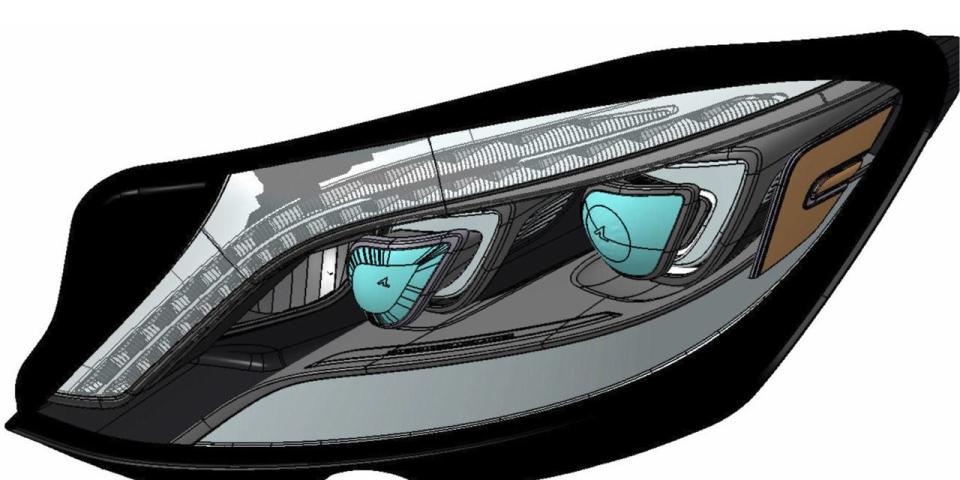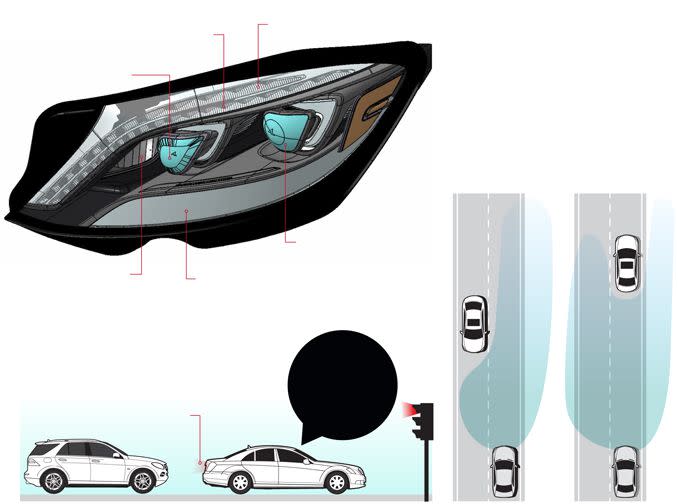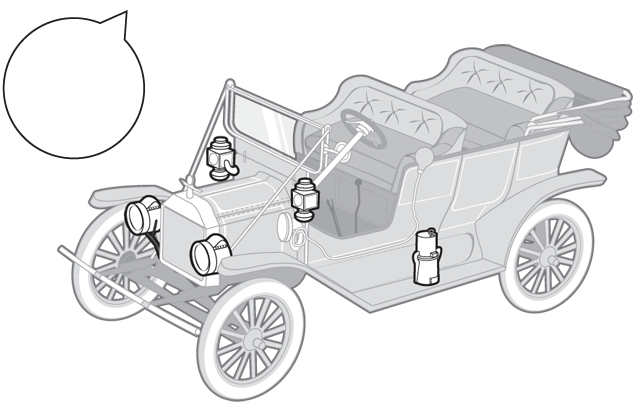LED Zeppelin: The 2014 Mercedes-Benz S-class's Radical Lighting Scheme


Each foglight is an array of four LED elements.
LED daytime running lamps give the new S-class a furrowed brow.
LED turn signal.
Cornering lamp projects light ahead of the car as it turns.
Night-vision infrared light illuminates objects in the path ahead.
Low- and high-beam lamps have 56 LEDs. A motorized mask shapes the illumination to suit traffic conditions.
Multiple taillamp intensities prevent glare in heavy, stop-and-go traffic conditions.
Unfortunately, not all of the new S-class's lighting complies with U.S. standards.
A mask shields the beam to avoid blinding oncoming traffic.
The beam can also wrap around a car in the same lane of travel.
From the April 2013 Issue of Car and Driver
The new Mercedes S-class due this fall turns the page on more than a century of incandescent lamps in cars. Totally rid of hot filaments, the sixth-generation S-class sedan will instead be fitted with 490 LEDs filling all lighting, signaling, and interior-illumination roles.
The auto industry is shifting to light-emitting diodes because their expected life is three times that of the average car. They also improve mileage by consuming a fraction of the energy required by conventional headlamps. At the rear, their quicker response adds 15 feet at 75 mph to the warning distance provided to cars behind. Unlike high-intensity discharge (HID, or xenon) lamps, LEDs contain no mercury, so they’re also environmentally benign.
Essentially specks of doped silicon on a circuit board, LEDs are frugal because they convert electricity to light with minimal waste heat. Since LED-based headlamps can be half the size of conventional lamps, designers now use this technology to redefine the faces of their cars, with added functions bound only by their imaginations. For example, the European S-class keeps its high-beams lit most of the time, using motorized masks to block the part of the beam that would dazzle oncoming traffic or cars to the side. The computer-controlled masks also eliminate glare from reflective signs. To avoid blinding drivers at the rear in heavy traffic, the S-class’s brake- and taillamps are lit at varying intensities.
Unfortunately, some of these functions leap beyond our current federal lighting standards, so U.S. models will not enjoy all of the LED’s advantages. We hope government regulators will see the light and enable carmakers to realize the LED’s full potential.
first gassers
1904 The earliest headlamps are fueled by an acetylene gas system contrived by Indy Speedway founders Carl Fisher and James Allison in partnership with inventor Percy Avery.

1914 Hollywood starlet Florence Lawrence invents the brake light and turn signal.
You Might Also Like

 Yahoo Autos
Yahoo Autos 